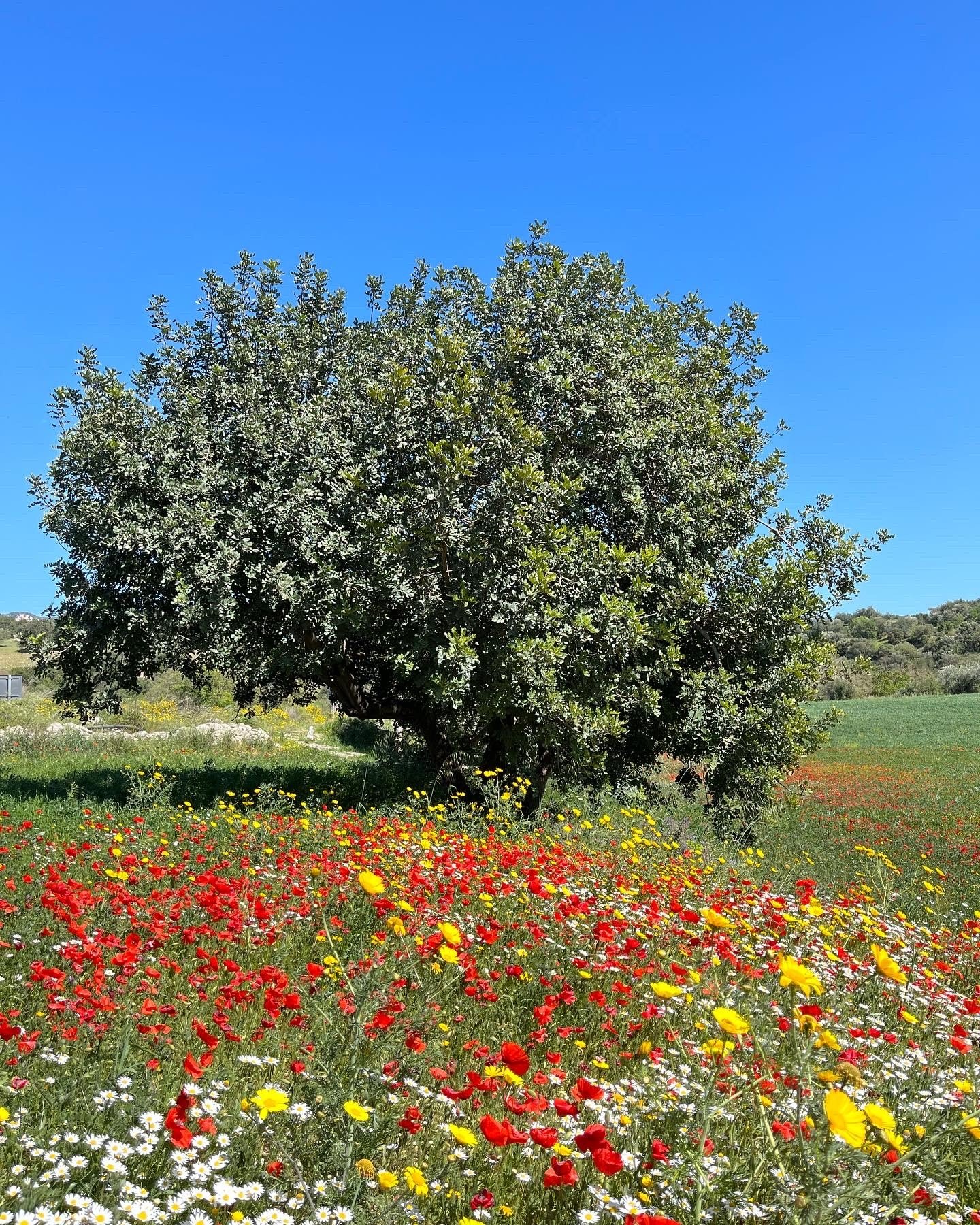Trees of Sicily
Paul and I just spent a week in Sicily - on the 37th parallel, so almost exactly the same latitude as San Francisco, and with a Mediterranean climate similar to California’s (not much rain in the summer, mild and rainy winters). Unlike San Francisco, the summers in Sicily are very hot, but we were there in April, so the fields were still green and temperatures were in the 60s (fahrenheit). Our trip took us clockwise from Syracuse to Noto to Ragusa to Agrigento to Selinunte to Segesta, and finally to Palermo, so we missed the northern coast and the most of the center of the island.
a couple date palms (Phoenix dactylifera) in Palermo
An overall comment: there’s not a lot of native forest left in Sicily, at least in the southern and western parts of the island that we visited. One of my favorite days was spent taking some back roads north of the main highway from Noto to Ragusa, where we saw some of the most beautiful scenery of the trip - agricultural landscapes with olive, citrus and almond orchards, “tree tunnels” of native Italian stone pine (Pinus pinea), and lots of carob trees (Ceratonia siliqua) that appeared to be there for commercial purposes - we saw carob bars sold in the local shops nearby.
a carob tree (Ceratonia siliqua) in a field on a back road northeast of Noto, with poppies and garland daisies in foreground
terraced fields northeast of Noto, with almond trees (Prunus dulcis) in the foreground
a “tree tunnel” of Italian stone pines (Pinus pinea) near Agrigento
The Valley of the Temples at Agrigento is spectacular and one of the highlights of any trip to Sicily, with its well-preserved Greek ruins dating to the 6th century BC. But many people miss the Garden of the Kolymbetra that’s adjacent to the ruins, created by the Moors much later when they ruled from the 8th to the 12th centuries - they brought sophisticated irrigation techniques to the site and brought many varieties of citrus trees to complement the local olive and fig trees. Neglected for centuries, the garden has recently been restored - you’ll be able to see dozens of varieties of lemons, mandarins and oranges, as well as olive trees that are many hundreds of years old.
An ancient olive (Olea europaea) at the Garden of the Kolymbetra in Agrigento
But in Sicily you don’t just see olives in ancient gardens - they’re everywhere. Olives still seem to be the number one agricultural product of the island, at least in the parts that we visited.
an olive orchard in western Siciliy, near Segeste
We saw mediterranean fan palms (Chamaerops humilis) everywhere - it’s the palm with the northernmost native range in the world. This palm is native to Sicily and elsewhere in the Mediterranean, and pops up everywhere - in well manicured city gardens, and even in the ruins of ancient Greek temples.
A mediterranean fan palm (Chamaerops humilis) growing amid the ruins of the archaeological park at Selinunte
Our final tree destinations were in Palermo. The Palazzo dei Normanni (or Royal Palace) of Palermo has been the seat of the kings and other rulers of Sicily, and since 1946 it has been the seat of the Sicilian Regional Assembly. Your ticket to the palace also gets you into the beautiful and well-kept adjacent gardens.
a bismarck palm (Bismarckia nobilis) in the Palazzo dei Normanni in Palermo
a Canary Islands dragon tree (Dracaena draco) in the Palazzo dei Normanni in Palermo
And two kilometers to the east, near the harbor, is the City’s botanical garden. The garden has some spectacular specimens, including a gigantic Moreton bay fig (Ficus macrophylla v. columnaris), a cook pine (Araucaria columnaris) that is apparently the tallest tree in Palermo, and some amazing allees of silk floss tree (Ceiba speciosa). We were visiting in mid-April, so the Ceibas weren’t in bloom, but I’m guessing that they’re amazing later in the summer.
a Moreton bay fig (Ficus macrophylla v. columnaris) in the Palermo botanical garden. That’s me standing behind one of the buttressing roots of the tree.
One of the allees of silk floss tree (Ceiba speciosa) in the Palermo botanical garden
close up of silk floss tree (Ceiba speciosa)











